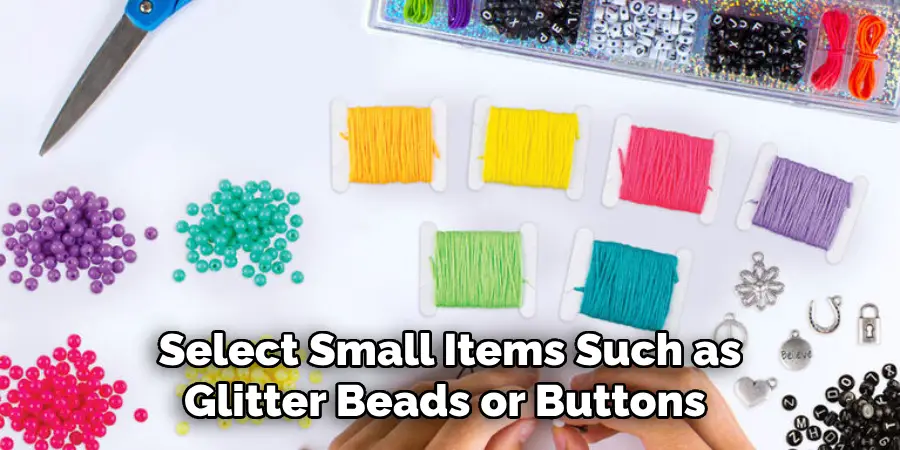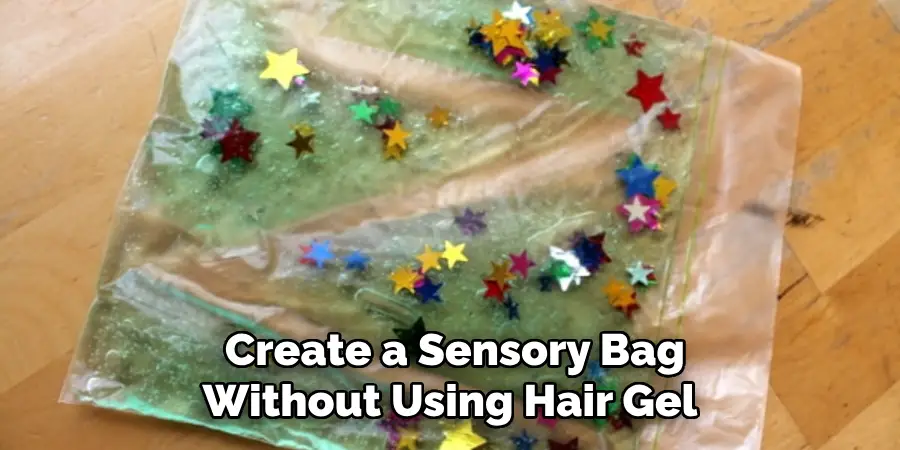Making a sensory bag without hair gel is an excellent way to provide children with a fun and engaging sensory experience. Sensory bags are simple to make, affordable, and can be customized for different developmental stages and needs.

The main advantage of making a sensory bag without hair gel is that it is a more affordable option compared to using traditional hair gel. Hair gel can be pricey, especially if you are making multiple sensory bags for your child or students.
By using alternative materials such as corn syrup or baby oil, you can save money while still providing a fun and stimulating experience for your child. In this blog post, You will learn in detail how to make a sensory bag without hair gel.
Step-by-step Instructions for How to Make a Sensory Bag Without Hair Gel
Step 1: Inspect the Bag
Before starting, inspect the bag you plan to use for any holes or tears. These will need to be patched up before creating your sensory bag. Gather all necessary materials including a clear plastic zipper bag, food coloring, water, and various small items for filling such as glitter, beads, or buttons.
Step 2: Prepare the Zipper Bag
Open the zipper on the clear plastic bag and lay it flat on a table or work surface. This will make it easier to fill and seal later. Add a few drops of food coloring into the bag. You can use any color you like, but blue or green tend to be calming colors.
Step 3: Add Water
Fill the bag about 1/4 to 1/3 of the way with water, depending on the size of your bag. Make sure not to overfill as this will make it difficult to seal and may cause spills. Select small items such as glitter, beads, or buttons to add to the bag for sensory stimulation. You can also add other items such as small toys, foam shapes, or pom poms.

Step 4: Add Filling Items
Add the selected filling items into the bag on top of the water and food coloring. You can use a variety of different items for different textures and colors. Carefully seal the zipper on the bag, making sure it is completely closed. You can also use clear tape to secure the zipper for added protection.
Step 5: Mix and Explore
Begin gently mixing the contents of the bag by pressing and moving your hands over the surface. This will create a sensory experience as you feel and see the different items inside.
Once the bag is fully mixed, you can let your child play with it by moving and manipulating the bag. This sensory activity can provide a calming and stimulating experience for children of all ages.
By following these simple steps, you can easily create a sensory bag without using hair gel. This is a great alternative for those who may not have access to hair gel or prefer to use other materials.

Safety Tips for How to Make a Sensory Bag Without Hair Gel
- When working with children, always provide adult supervision during the creation of a sensory bag. This will prevent any potential accidents that could occur.
- Be aware of potential allergies or sensitivities to certain ingredients in the sensory bag. If necessary, substitute or omit those ingredients to ensure safety for all participants.
- Avoid using sharp objects such as scissors or glass in the making of a sensory bag. Opt for safe and child-friendly materials such as plastic or fabric.
- If using food items in the sensory bag, make sure they are fresh and not expired to prevent any potential health hazards.
- Always wash hands before handling any materials for the sensory bag to maintain cleanliness and hygiene.
- Keep the sensory bag out of reach from young children when not in use to avoid any accidental ingestion of materials.
- Dispose of the sensory bag properly after use, especially if it contains perishable items. This will prevent any potential health hazards and ensure a clean environment.
Overall, following these safety tips will make the process of creating a sensory bag without hair gel a fun and worry-free experience for both children and adults alike.
Are There Any Potential Hazards to Take When Making and Using a Sensory Bag Without Hair Gel?
When creating a sensory bag, there are always potential hazards to consider. This is especially important when making one without hair gel, as the ingredients used may be different and could pose different risks.
One potential hazard to take into account is the choice of container for your sensory bag. It is recommended to use a strong and durable plastic bag or container that will not easily tear or break. This is to prevent any leaks or spills, which could be messy and also a safety hazard if the bag is used by children.

Another consideration should be the materials used to fill the sensory bag. While hair gel is commonly used as it creates a squishy and slimy texture, there are alternative options such as cornstarch and water.
However, these materials may not have the same consistency as hair gel and could potentially be a choking hazard if swallowed by young children. It is important to thoroughly research and test any alternative fillers before using them in a sensory bag.
How Do You Clean and Store the Sensory Bag After Use?
After creating a sensory bag without hair gel, you may wonder how to properly clean and store it for future use. Here are some simple steps to follow:
- Empty the Bag: Before cleaning, make sure to empty the sensory bag of all its contents. This includes any toys, objects, or ingredients that may have been used in the bag.
- Wipe Down the Bag: Use a damp cloth or wipe to gently clean the inside and outside of the sensory bag. This will help remove any residue from the ingredients used.
- Rinse with Warm Water: Next, rinse the bag with warm water to ensure all remaining debris is removed.
- Let it Dry: Once cleaned, let your sensory bag air dry completely before moving on to storage.
- Store in a Dry Place: To prevent mold growth, store your sensory bag in a dry and cool place. A plastic ziplock bag or airtight container is ideal for keeping the bag free from moisture.
- Reuse or Dispose: Depending on the materials used, you can choose to reuse the sensory bag for future playtime or dispose of it after one use. If you choose to reuse the bag, make sure to thoroughly clean and dry it before refilling it with new sensory materials.
With these simple steps, you can maintain the cleanliness and longevity of your sensory bag without hair gel. Now you can continue to enjoy creating and playing with different sensory bags without worrying about any potential mess or storage issues.
What Are the Benefits of Using a Sensory Bag in Activities for Individuals With Sensory Processing Disorders?
Sensory bags are a great tool to use in activities for individuals with sensory processing disorders. They provide a safe and calming outlet for those who struggle with sensory overload or under-stimulation. While most traditional sensory bags use hair gel as the main ingredient, there are actually many benefits to making them without hair gel.
One of the main benefits of using a sensory bag is that it can help individuals regulate their emotions and behaviors. Sensory bags provide a source of tactile stimulation, which can be very soothing for those who are overwhelmed by their senses.

By playing with the sensory bag, individuals can calm themselves down and manage any disruptive or anxious behavior. Another benefit of using a sensory bag without hair gel is that it is more accessible to everyone.
Hair gel can be expensive, and not everyone has access to it. By using alternative materials such as water, baby oil, or even corn syrup, sensory bags become a more affordable option for families and educators.
Furthermore, making a sensory bag without hair gel allows for customization based on individual preferences and needs. Some individuals may find certain textures or colors more comforting than others.
Conclusion
In conclusion, creating a sensory bag without hair gel is not only possible, but it can also be a fun and cost-effective activity for both kids and adults alike. This versatile sensory tool can provide hours of entertainment and help individuals of all ages explore different senses, improve focus and attention, and reduce anxiety or stress.
While hair gel is often used as the base for sensory bags due to its thick and slimy texture, there are many other alternatives that can achieve a similar effect. From cornstarch to dish soap, there is no shortage of household items that you can use to create a sensory bag without hair gel.
The key is to experiment with different textures and consistencies until you find the one that best suits your needs or preferences. I hope this article has been beneficial for learning how to make a sensory bag without hair gel. Make Sure the precautionary measures are followed chronologically.


